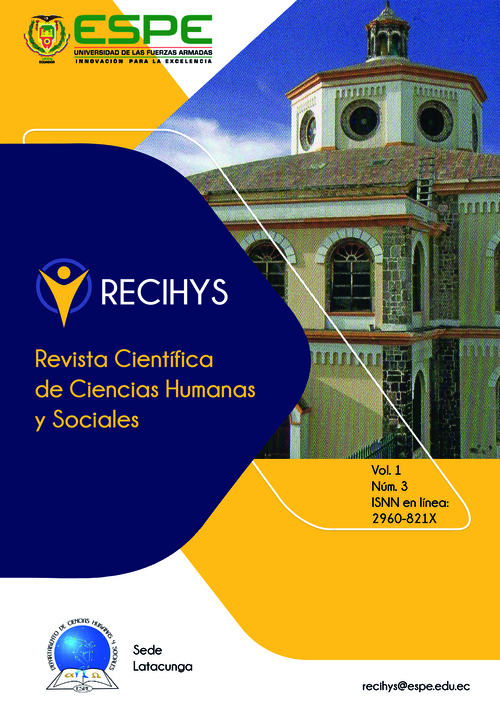Making Use of Prepositions: An Academic Proposal to Strengthen Writing Skills in First Level Students of English at the Universidad Técnica del Norte of Ibarra, Ecuador
Main Article Content
Abstract
This research-based article shows strengths and weaknesses that first level students of English at the Universidad Técnica del Norte of Ibarra-Ecuador have on the uses, functions and meaning of English prepositions. Prepositions, as part of the grammar system, can occur everywhere in the process of writing, and there are not many rules to help beginner students to use them correctly. It is difficult for students to learn to use prepositions all on their own; even after a lot of work and effort to achieve a high English proficiency level, students of English still struggle with prepositions. Thus, the main purpose of this work was to describe and explain why beginner students of English make mistakes when using prepositions in writing, and then contribute to the correct use of prepositions in English to strengthen not only Speaking but Writing skills. The findings showed that there were some mistakes that beginner students committed at the moment of using prepositions when writing; the main errors encountered have relation with the following phenomena: i) Language transfer or interference from the mother tongue, ii) Transfer of training, and iii) Overgeneralization of target language rules. Therefore, this article indicates that guiding students in the study of prepositions is essential before fossilization occurs; it also motivates teachers to supplement their classes with refreshing activities and exercises that will give learners exposure to target writing since beginners.
Downloads
Article Details

This work is licensed under a Creative Commons Attribution 4.0 International License.
Authors who publish in this journal agree to the following terms: Authors retain the copyright and guarantee the journal the right to be the first publication of the work, as well as, licensed under a Creative Commons Attribution License that allows others share the work with an acknowledgment of the authorship of the work and the initial publication in this journal. Authors may separately establish additional agreements for the non-exclusive distribution of the version of the work published in the journal (for example, placing it in an institutional repository or publishing it in a book), with acknowledgment of its initial publication in this journal. Authors are allowed and encouraged to disseminate their work electronically (for example, in institutional repositories or on their own website) before and during the submission process, as it may lead to productive exchanges as well as further citation earliest and oldest of published works.
How to Cite
References
Bolton , D., & Goodey, N. (1996). English Grammar in Steps. London: Richmond Publishing.
Brown, H. D. (1994). Teaching by Principles. An Interactive Approach to Language Pedagogy. San Francisco, California: Prentice Hall Regents.
Corder, S. P. (1974). The Significance of Learners' Errors. Newbury: Rowley Mass.
Gear, J., & Gear , R. (2009). iBT Cambridge Preparation for the TOEFL Test. Cambridge: Cambridge University Press.
Hacker , D. (1988). Rules for Writers a Concise Handbook. Boston: St. Martin´s Press.
Hall, E. J. (1982). Dictionary of Prepositions for Students of English. New York: Minerva Books.
Kesner Bland, S. (2003). Grammar Sense. New York: Oxford University Press.
Kroll, B. (1990). Second Language Writing: Research Insides for the Classroom. Cambridge: Cambridge University Press.
Labov, w. (1969). The Logic of Nonstandard English. Georgetown: Georgetown University Press.
Larsen Freeman, D. (1997). Grammar Dimensions Form, Meaning, and Use. Boston, Makssachusetts: Heinle & heinle Publishers.
Lester , M., & Beason, L. (2013). English Grammar and Usage. NY, USA: McGraw-Hill.
Lester, M., & Beason , L. (2013). The McGraw-Hill handbook of English Grammar and Usage. USA.: McGraw Hill.
Longman Group UK. (1989). Longman Dictionary of Contemporary English. Uk: Richard Clay.
Morenberg, M. (1997). Doing Grammar (2nd ed.). New York: Oxford University Press.
Omaggio, A. C. (1986). Teaching Language in Context. Proficiency - Oriented Instruction. Boston, Massachusetts: Heinle and Heinle Publishers.
Raimes, A. (1988). Grammar Troublespots An Editing Guide for ESL Students. New York: St. Martin´s Press.
Selinker, L. (1974). "Interlanguage". Newbury: Rowley Mass.
Suprity, A. (2020, May 9). Prepositions in English Grammar. Retrieved from https://englishcompositions.com/preposition-in-english-grammar/
Swam, M. (1988). Practical English Usage. Oxford: Oxford University Press.
Thomson Corporation. (2007). Collins Cobuild Advanced Dictionary of Américan English. Thomson Heinle.
University of Oxford. (2006). Oxford Dictionary of American English. UK.: Oxford University Press.
Ur, P. (1988). Grammar Practice Activities: A Practical Guide for Teachers. Cambridge: Cambridge University Press.
Wright, T. (1987). Roles of Teachers and Learners. Oxford: Oxford University Press. https://englishcompositions.com/preposition-in-english-grammar/ https://www.uvic.ca/learningandteaching/cac/assets/docs/Prepositions%20Final.pdf
https://www.nova.edu/tutoring-testing/study-resources/forms/prepositions.pdf
https://www.stmarys-ca.edu/sites/default/files/attachments/files/PrepositionChart.pdf
http://www.hunter.cuny.edu/rwc/repository/files/grammar-and-mechanics/Using-
Prepositions.pdf

